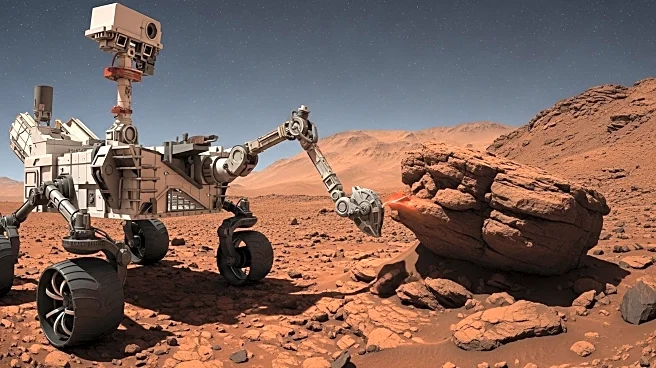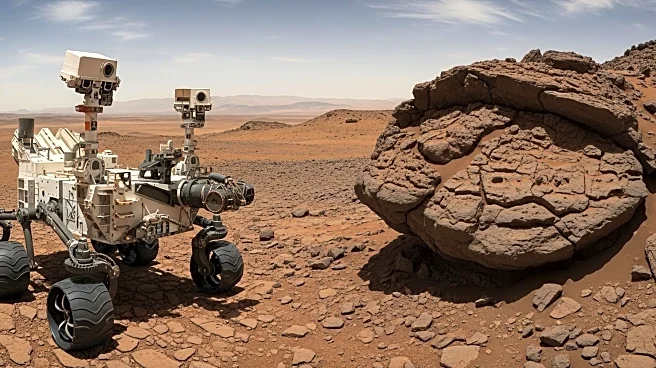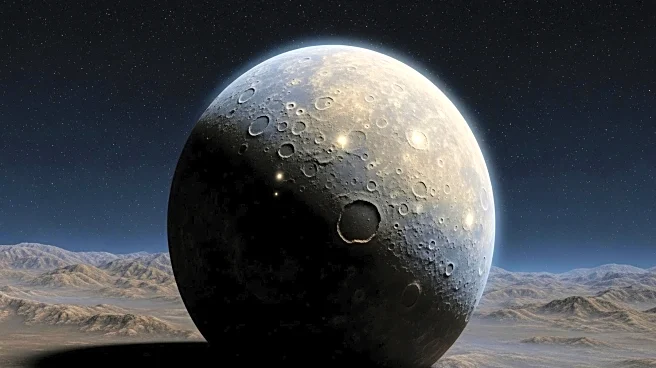What's Happening?
NASA's Perseverance rover has been exploring Jezero Crater on Mars, where it has identified 24 minerals that suggest the crater experienced multiple episodes of water activity. These findings indicate that the crater may have hosted environments suitable for life at various times in Mars' history. The study, led by Eleanor Moreland of Rice University, utilized data collected by Perseverance over three years, employing the rover's X-ray instrument and a new algorithm called MIST to create a mineralogical archive of the crater. The minerals reveal three stages of water-rock interaction, with varying implications for habitability. The oldest rocks show signs of hot, acidic fluids, while later episodes left behind minerals formed in cooler, more neutral waters, which are more conducive to microbial life.
Why It's Important?
The discovery of minerals indicating potential habitable conditions in Jezero Crater is significant for the ongoing search for ancient life on Mars. It broadens the scope of exploration beyond individual rock samples, suggesting that habitable conditions may have been widespread across the crater. This enhances the understanding of Mars' geological history and its potential to have supported life. The findings also provide context for previous discoveries, such as the potential biosignature detected in Sapphire Canyon, reinforcing the possibility of primitive life forms having existed on Mars. The study's use of the MIST algorithm could be crucial in selecting which samples to return to Earth for further analysis, potentially offering the first direct evidence of life beyond Earth.
What's Next?
NASA's Mars Sample Return (MSR) program aims to bring samples from Mars to Earth by 2035, although the program faces budgetary challenges. NASA is exploring cheaper alternatives to achieve this goal. Meanwhile, China is advancing its own Mars sample-return mission, Tianwen-3, which aims to collect and return Martian samples by 2031, potentially ahead of NASA. The competition in Mars exploration could accelerate advancements in planetary science and the search for extraterrestrial life. The mineral catalog created by the study will aid in prioritizing samples for return, ensuring the most valuable specimens are brought back for detailed analysis.
Beyond the Headlines
The study highlights the importance of understanding Mars' mineralogical history in the context of habitability. The presence of minerals formed in alkaline waters suggests a shift from harsher conditions to more life-supporting environments over time. This shift mirrors similar processes on Earth, where life can persist in extreme environments. The findings underscore the potential for life to exist in diverse planetary conditions, expanding the criteria for habitability in the search for extraterrestrial life. The development of the MIST algorithm also represents a significant advancement in planetary exploration, offering a method to accurately identify and prioritize samples for study.










